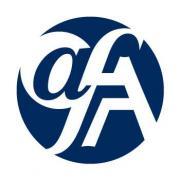Artists applying for individual project funding to support training or career development in dance or theatre are required to submit audition videos to support their applications. Here are some tips to help you make a good impression on the expert panel!
General tips for the artist
- Introduce yourself, your study project and your audition pieces (20 seconds maximum).
- You are strongly encouraged to incorporate the same level of performance quality as in a live audition setting. The expert panel is assessing both artistic and technical ability.
- Ensure you are clearly seen without visual distractions. Digital display information (such as clock, date, video duration/timer, etc) should be avoided.
- Wear neutral coloured garments.
- Music for dance or song auditions should be clearly audible with no off-camera acoustic distractions.
- You should have someone with a critical eye review your audition video. Give yourself enough time to redo it, if necessary.
General tips for the camera
- The camera should remain stationary and level, preferably on a tripod. It should not be hand-held or mounted on a dolly.
- If filming with your phone, please turn it sideways and film in landscape.
- The camera should reveal the artist's entire body for pieces that involve dance or a great deal of movement, but without situating the applicant too far in the background or too close to the foreground of the video frame.
- The camera must track the artist's movement as smoothly as possible.
- A monologue audition piece may show a variety of close-up, medium, and full body shots where appropriate using a zoom function.
- Audition pieces can be recorded separately. However, each audition piece should be recorded in one continuous video shot without edit.
- Avoid shooting into mirror unless absolutely necessary as in the case of a small studio setting.
- Avoid, if possible, having any background movement in the recording.
- The video recording should enhance and not distract from the applicant’s performance with the use of zoom, fades, specialty lenses or other functions.
Specific requirements for dance artists
The two audition pieces together must not exceed 4 minutes in length and should try to re-create the experience of a live audition, including full body shot composition, without props or costume.
- one audition piece must relate to the program of study, such as classical, contemporary, jazz, modern, folk or heritage dance
- the second audition piece must be in a contrasting style
Specific requirements for theatre artists
The two audition pieces together must not exceed 10 minutes in length and should try to re-create the experience of a live audition, including full body shot composition, without props or costume.
Musical theatre artists must submit one monologue and one song, and may include a dance piece if they wish.
How to send my video to the AFA
All video and audio files must be Windows compatible: MP3 and MP4 files are preferred.
Wherever possible, support material should be uploaded as an attachment into GATE (up to 4 MB).
If the file is too large, it can be submitted via e-mail as a downloadable link (through Google Drive, Dropbox, WeTransfer, Vimeo, etc). Please email to:
- danceAFA@gov.ab.ca for dance applications
- theatreAFA@gov.ab.ca for theatre applications
Please include in your subject line your first name, last name and project number (AFA-MIPG…).
Videos that cannot be downloaded (like through YouTube) will not be accepted.
If email is not a suitable option for you, you may instead mail a hard copy CD, DVD or USB drive to:
The Alberta Foundation for the Arts
10708 – 105 Avenue
Edmonton AB T5H 0A1
Please include your first name, last name and project number on the CD, DVD or USB. Your package must be postmarked on or before the deadline date to be accepted.
More information
Review the guidelines for Dance Individual Project Funding.
Review the guidelines for Theatre Individual Project Funding.

